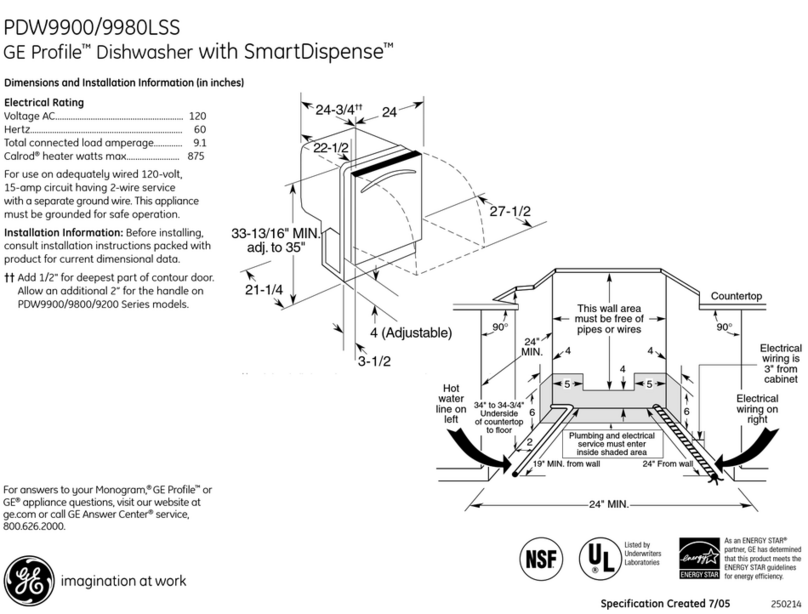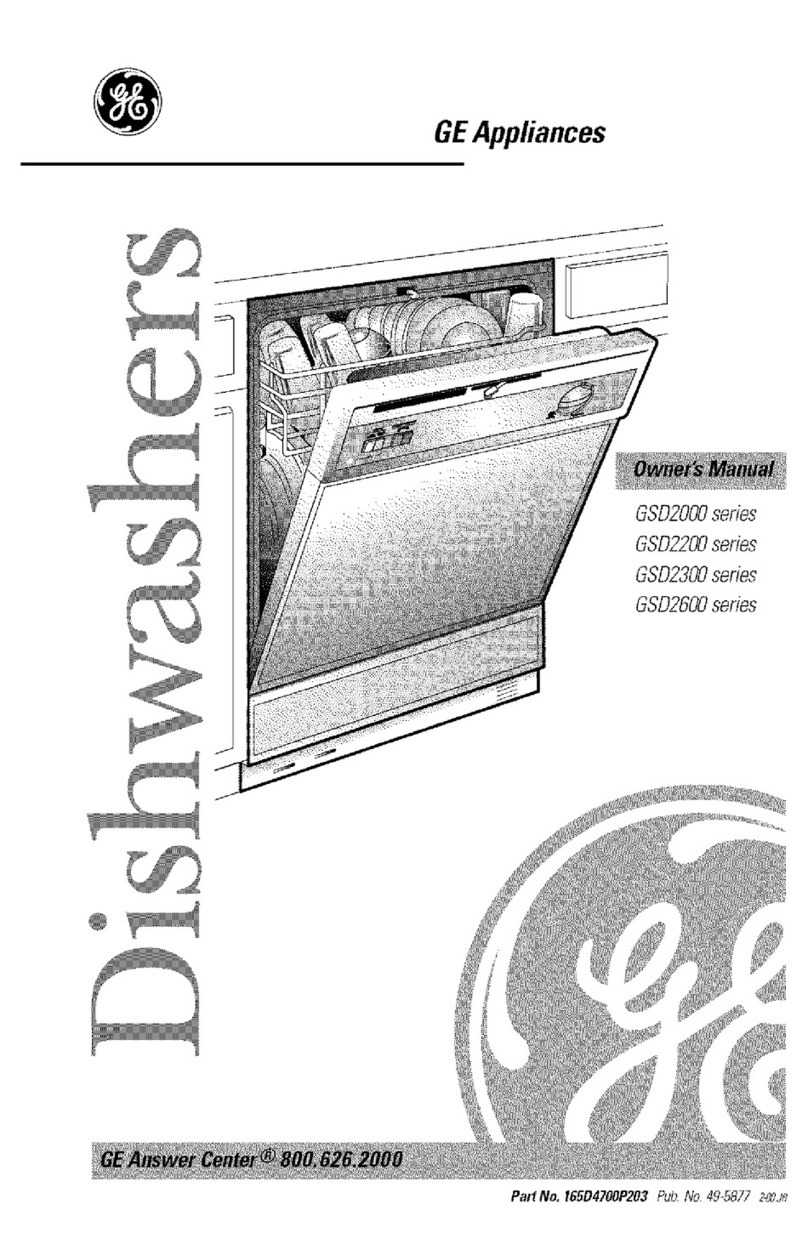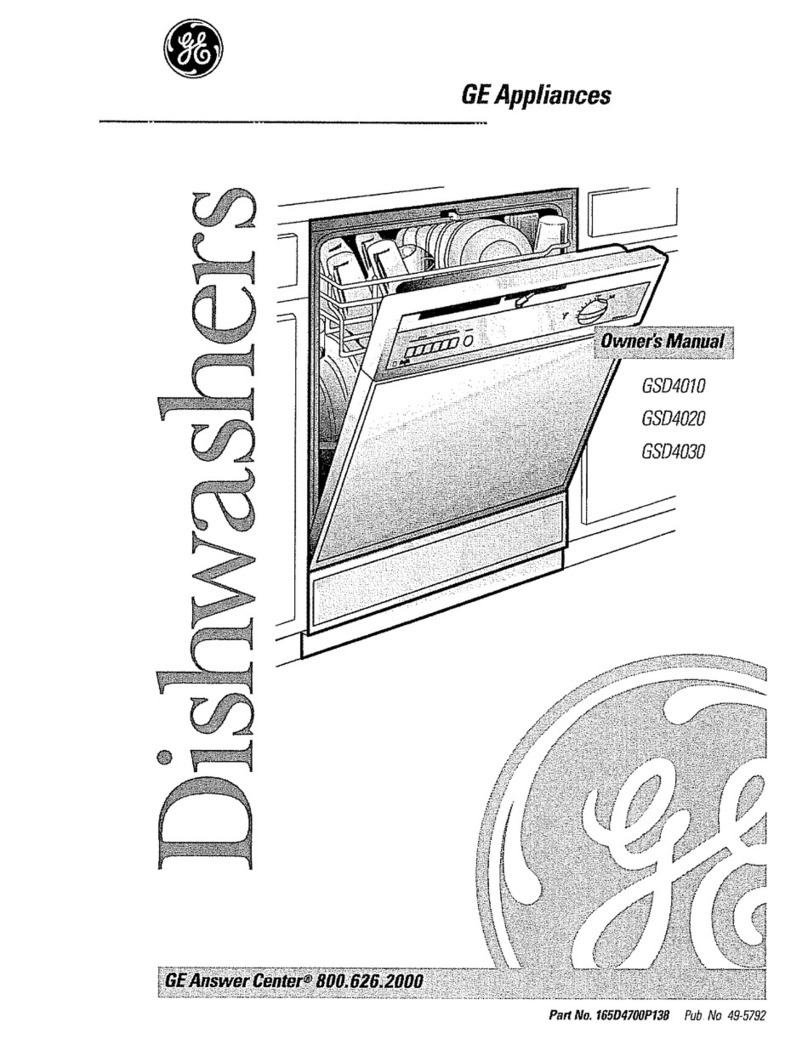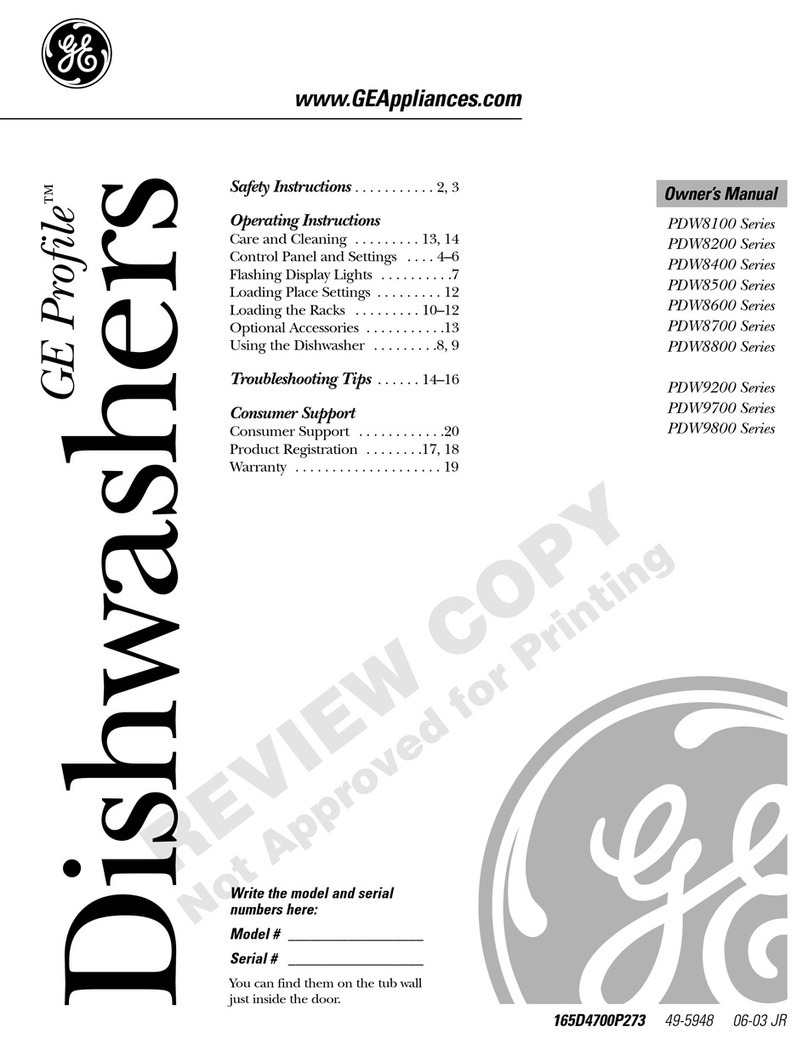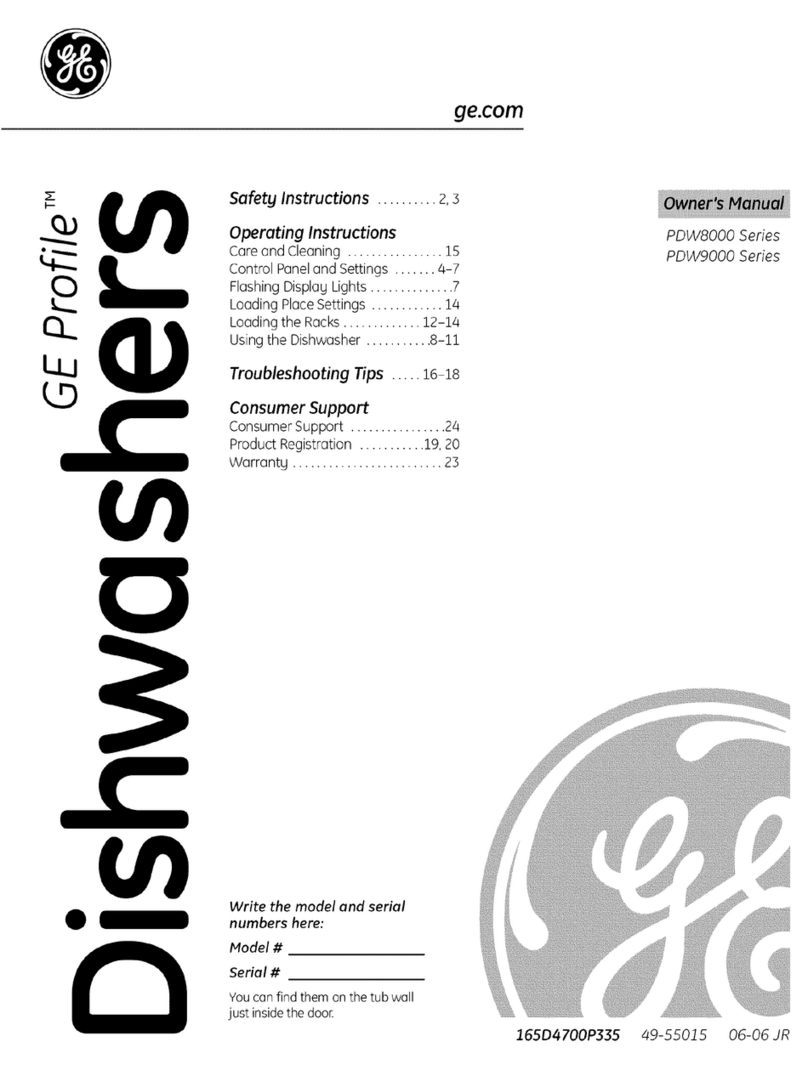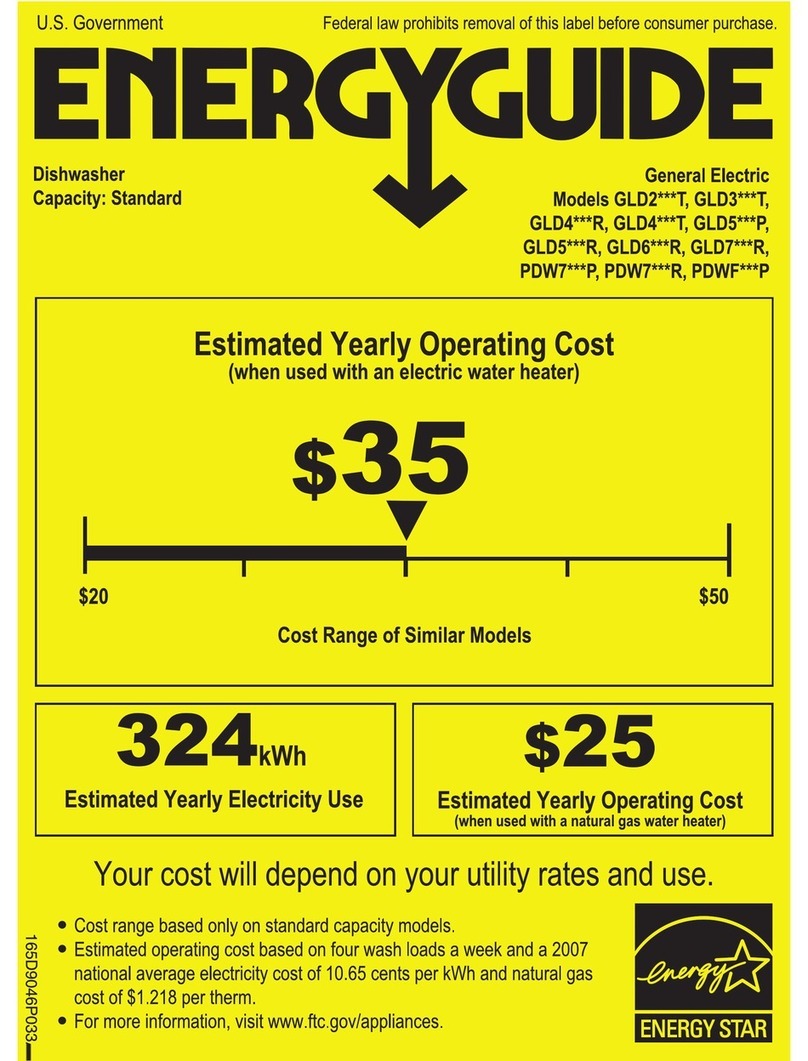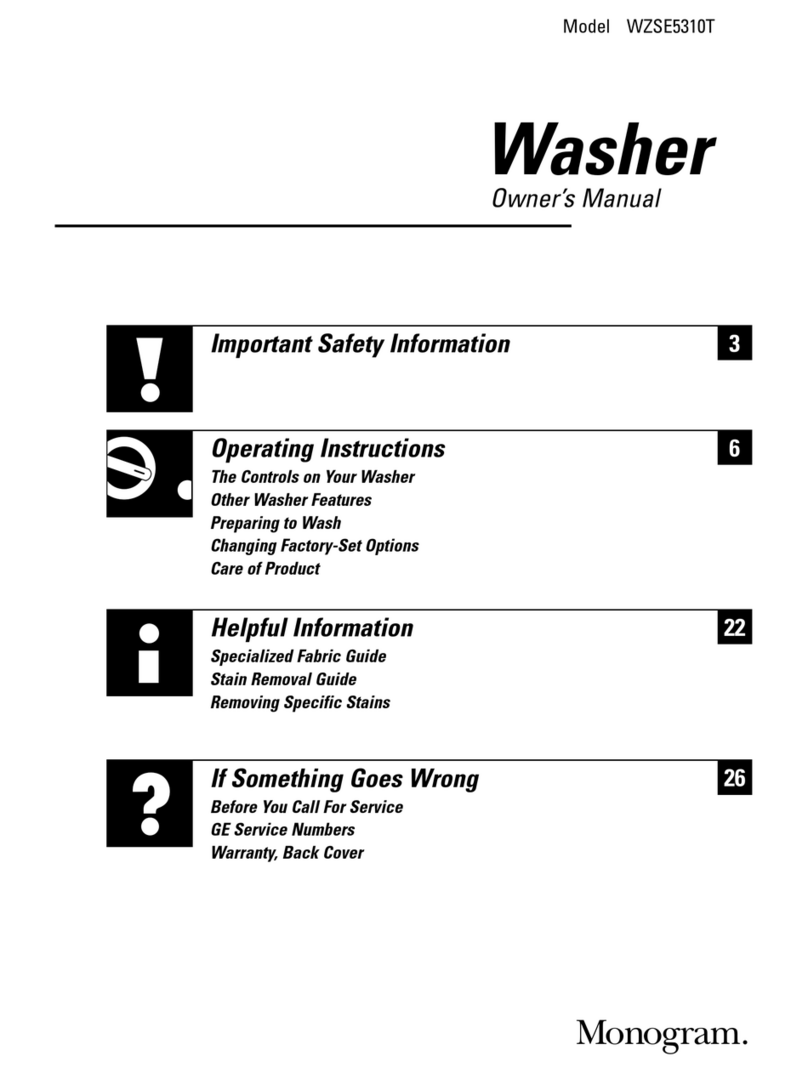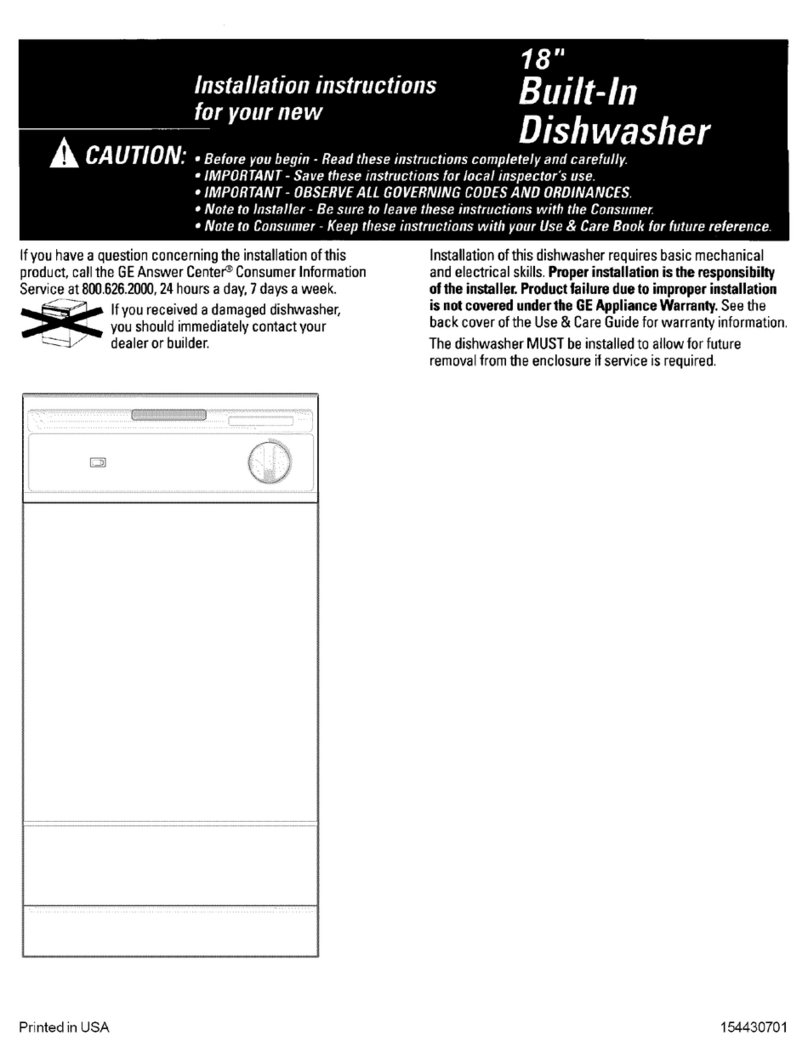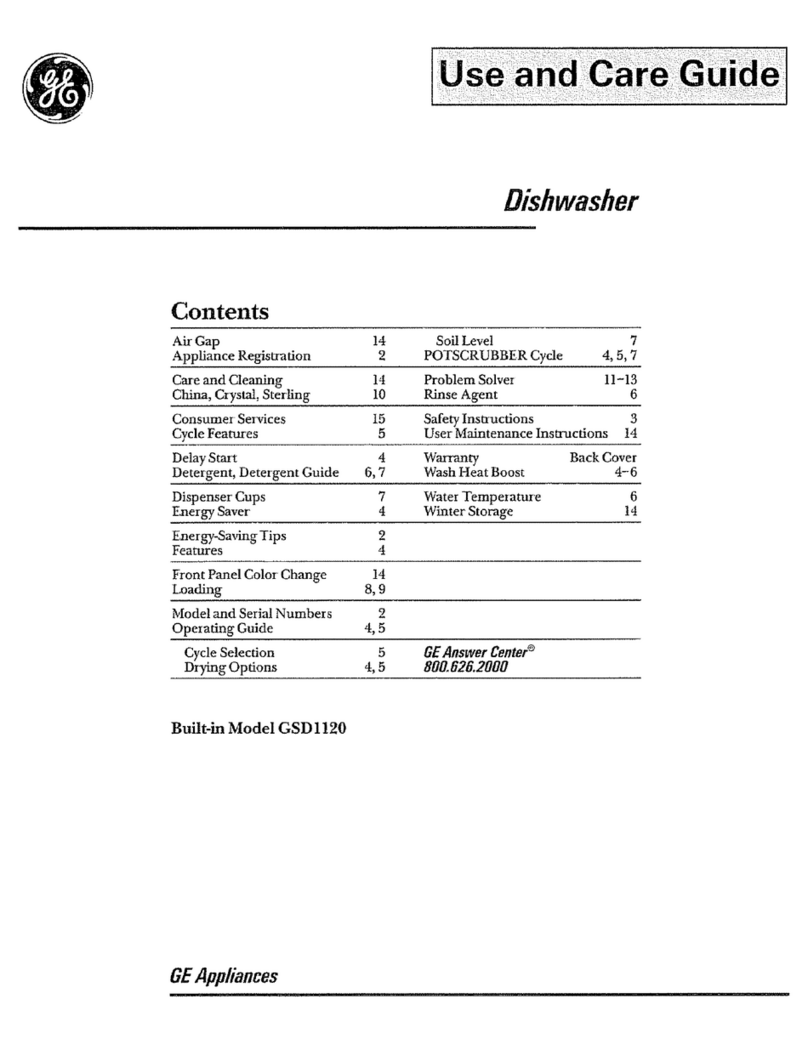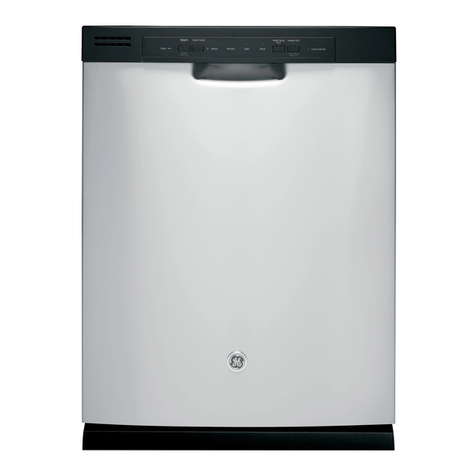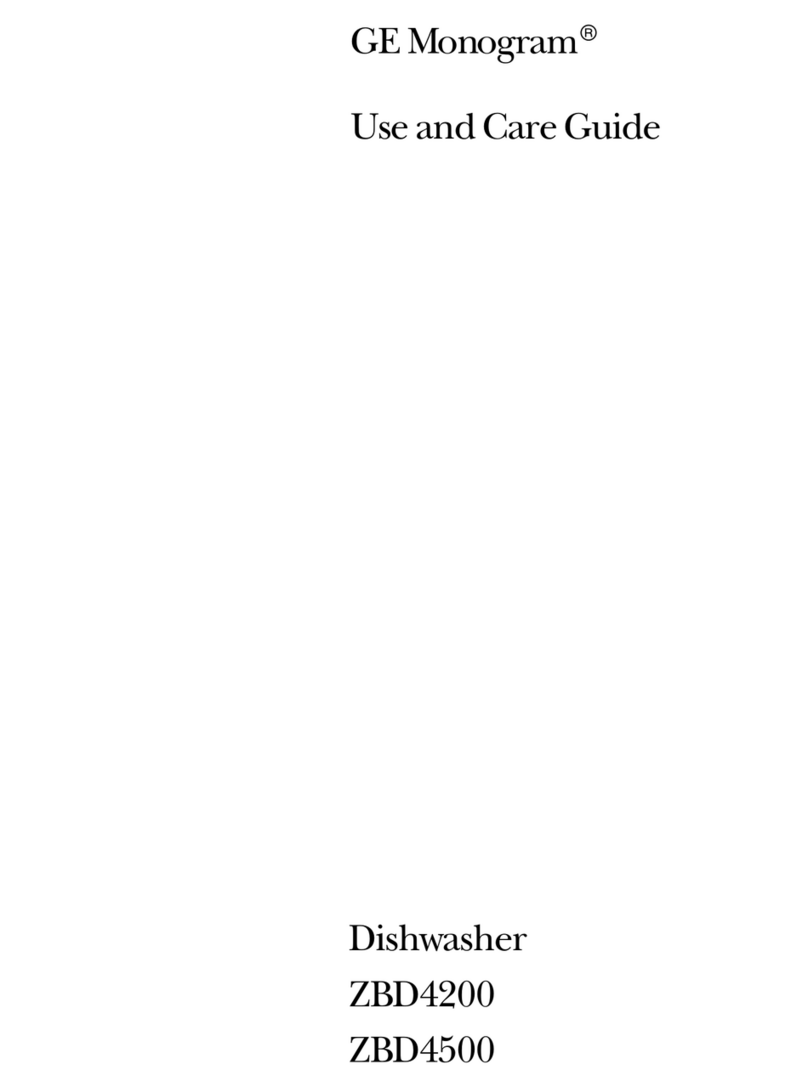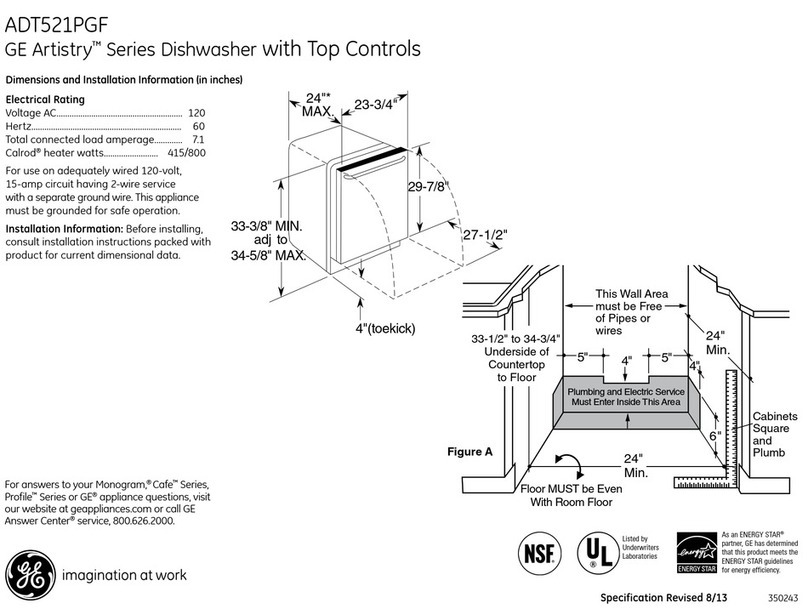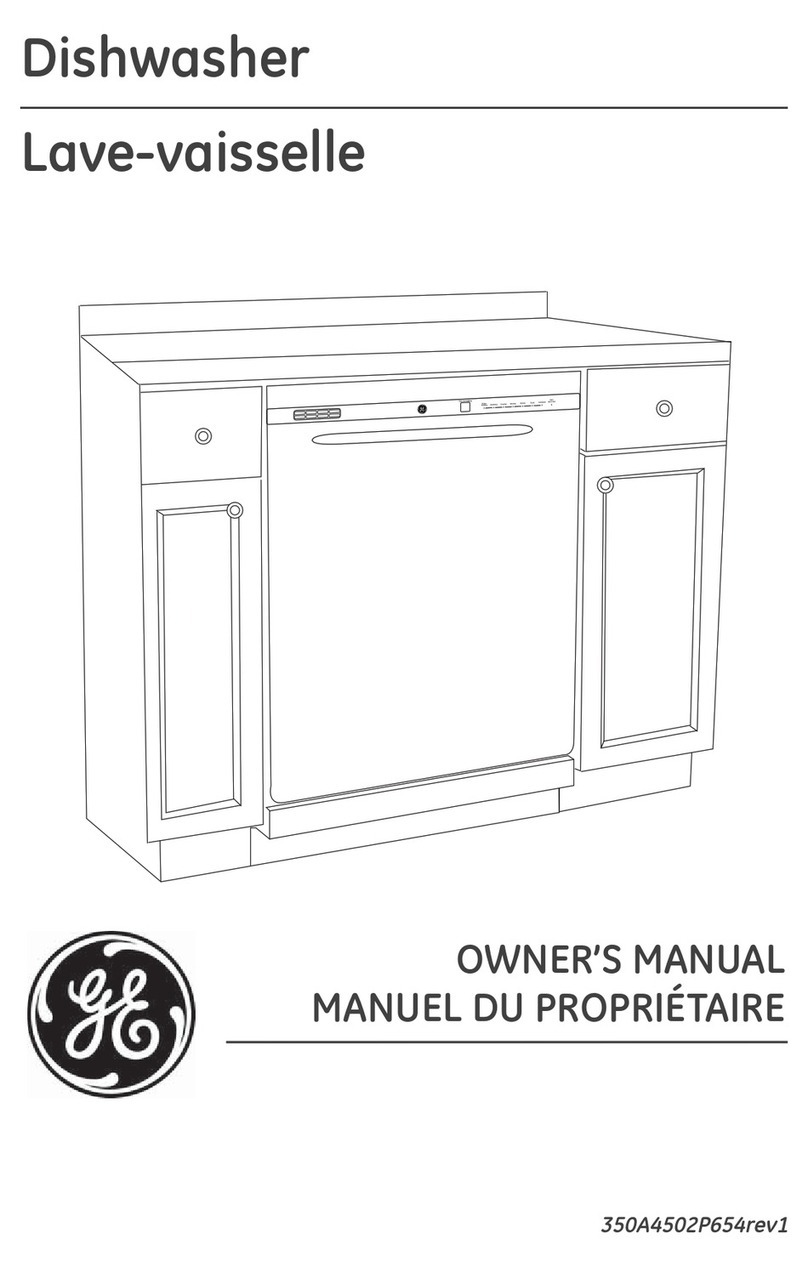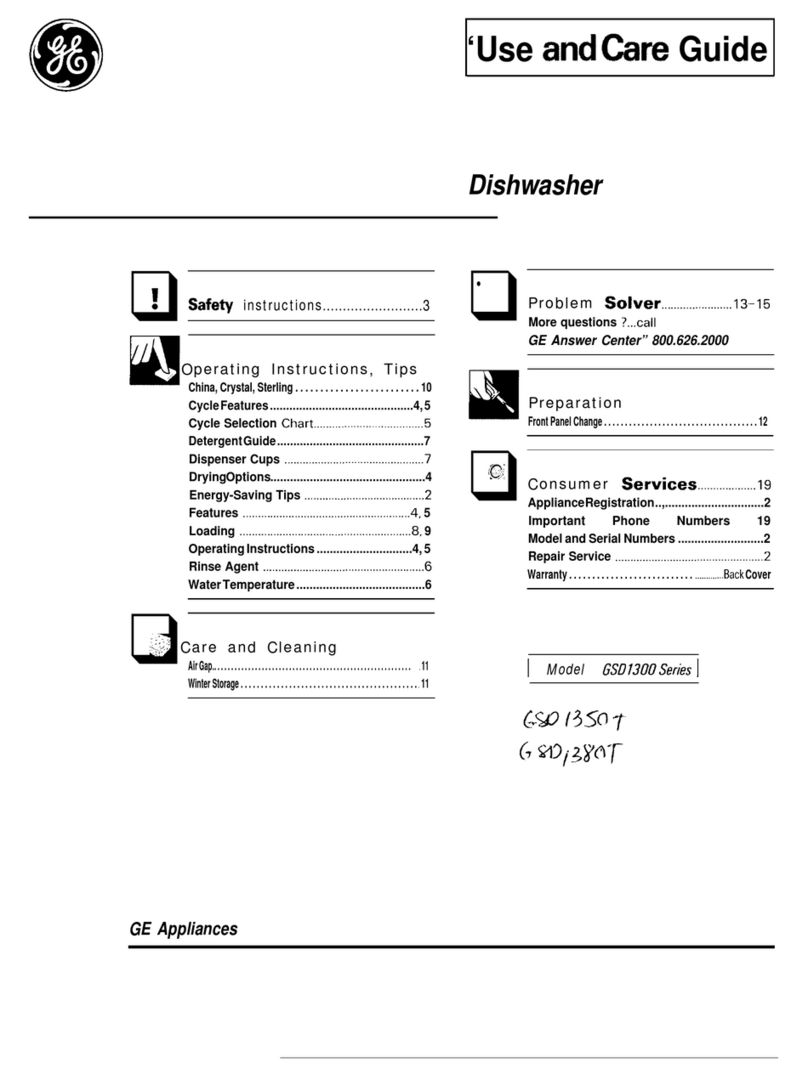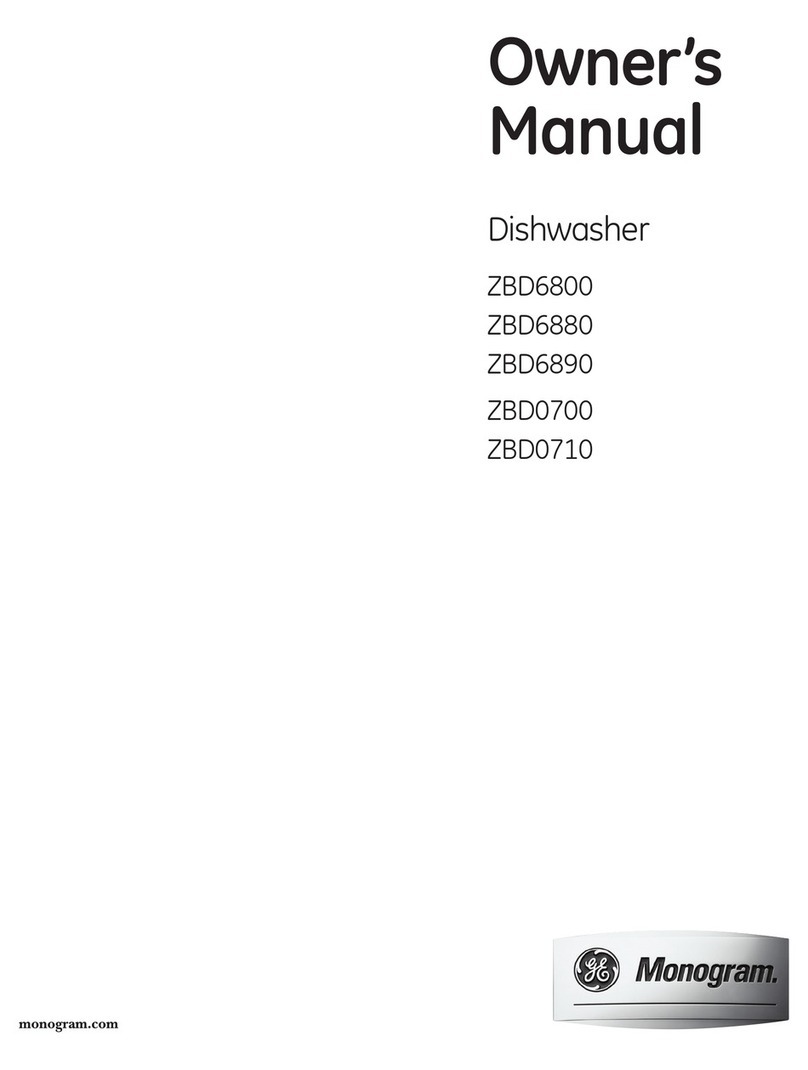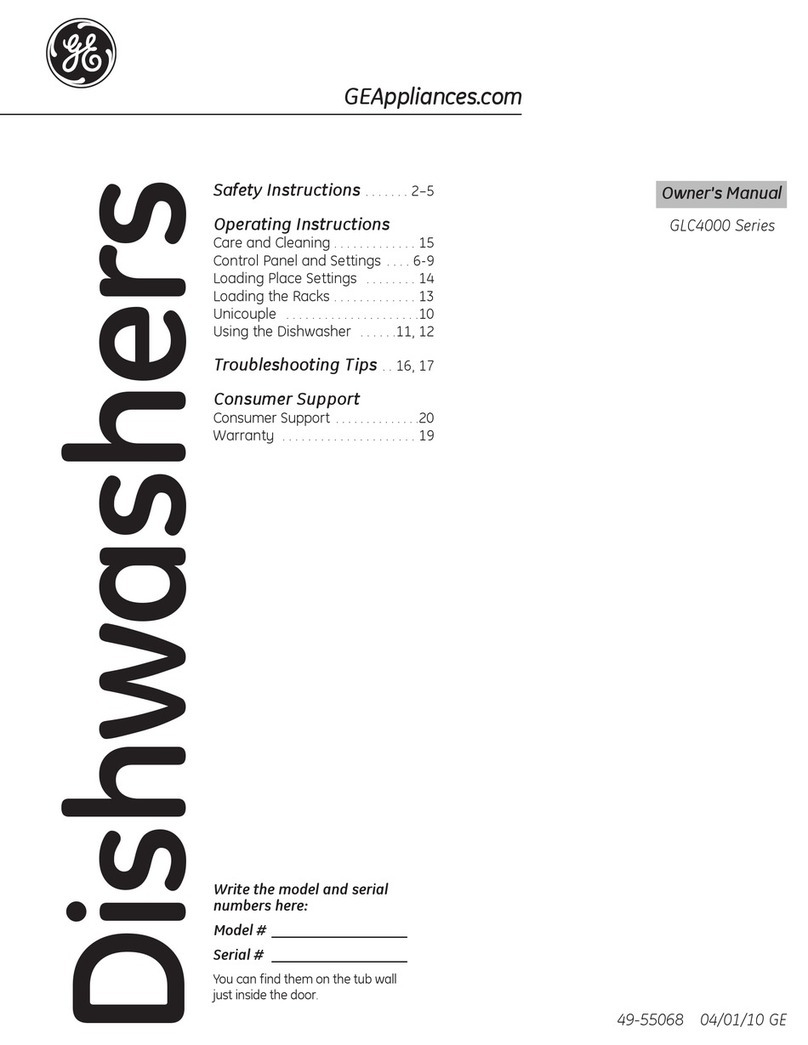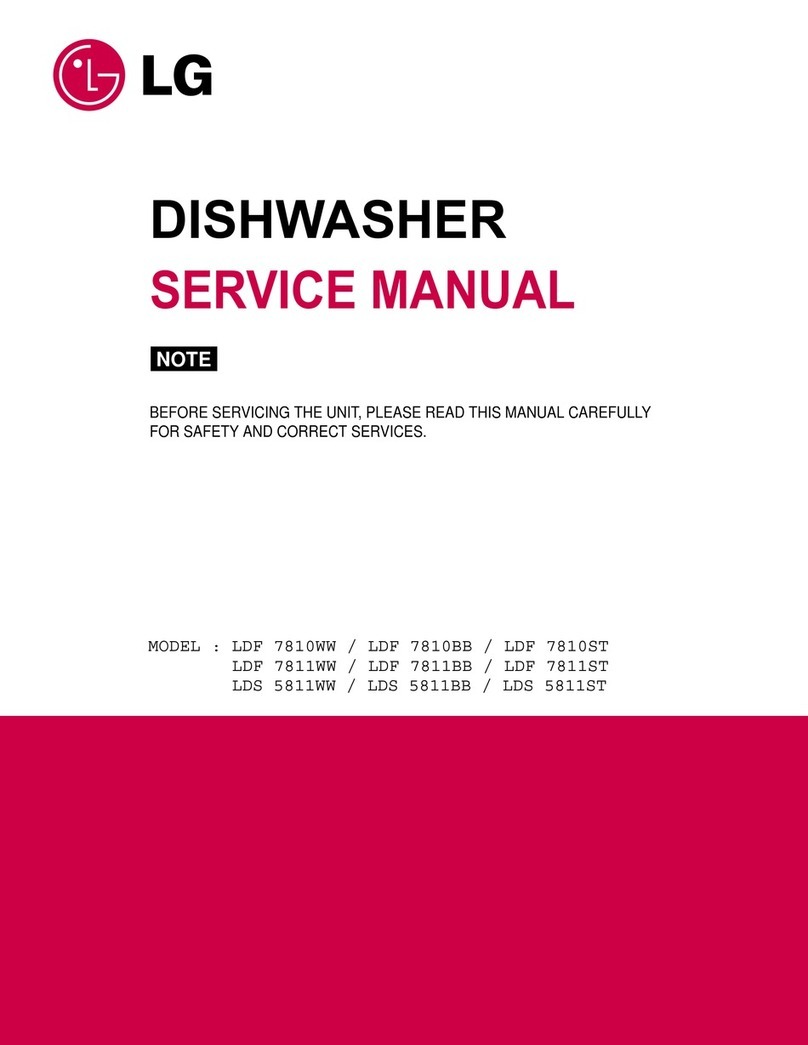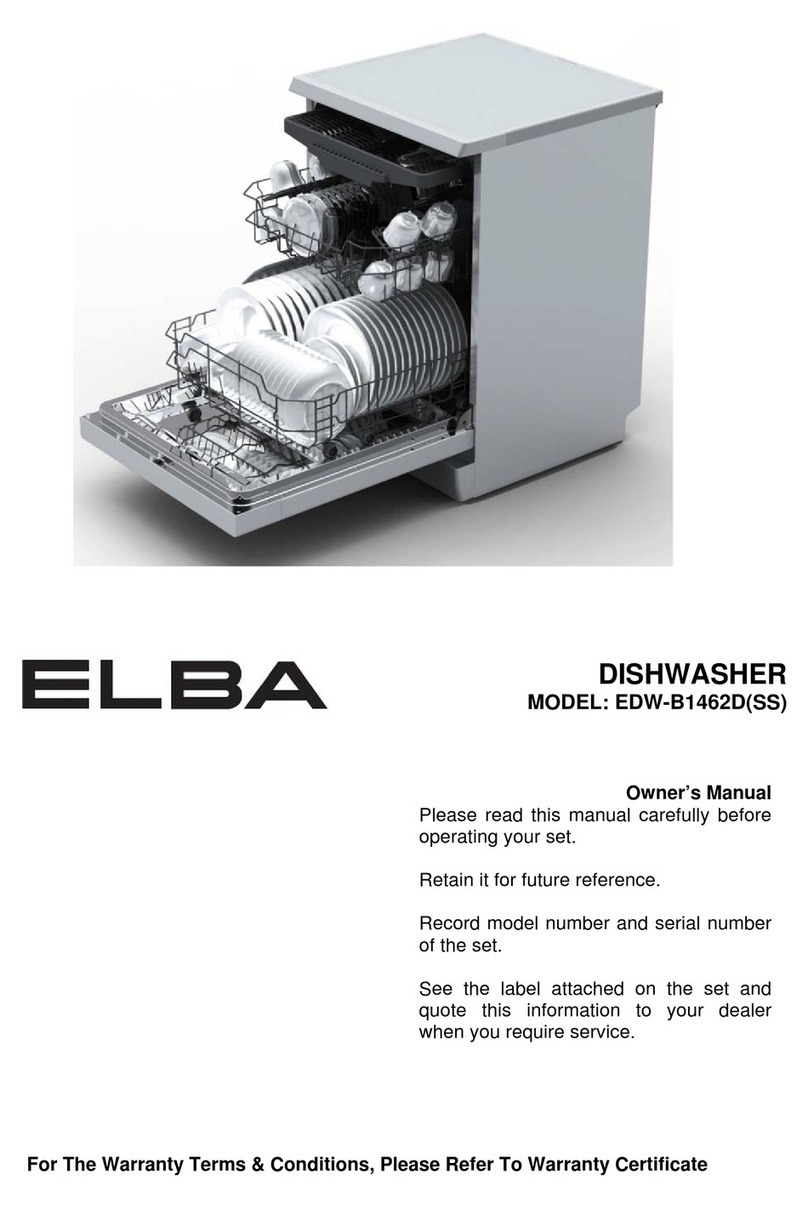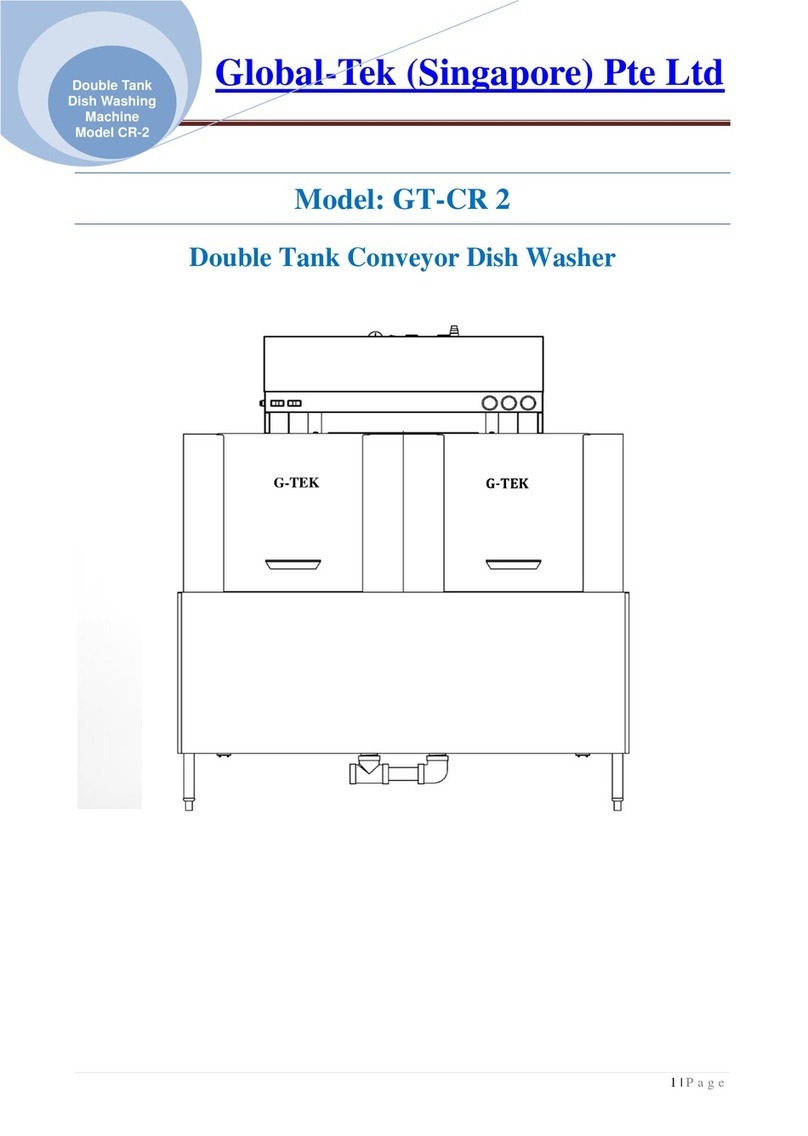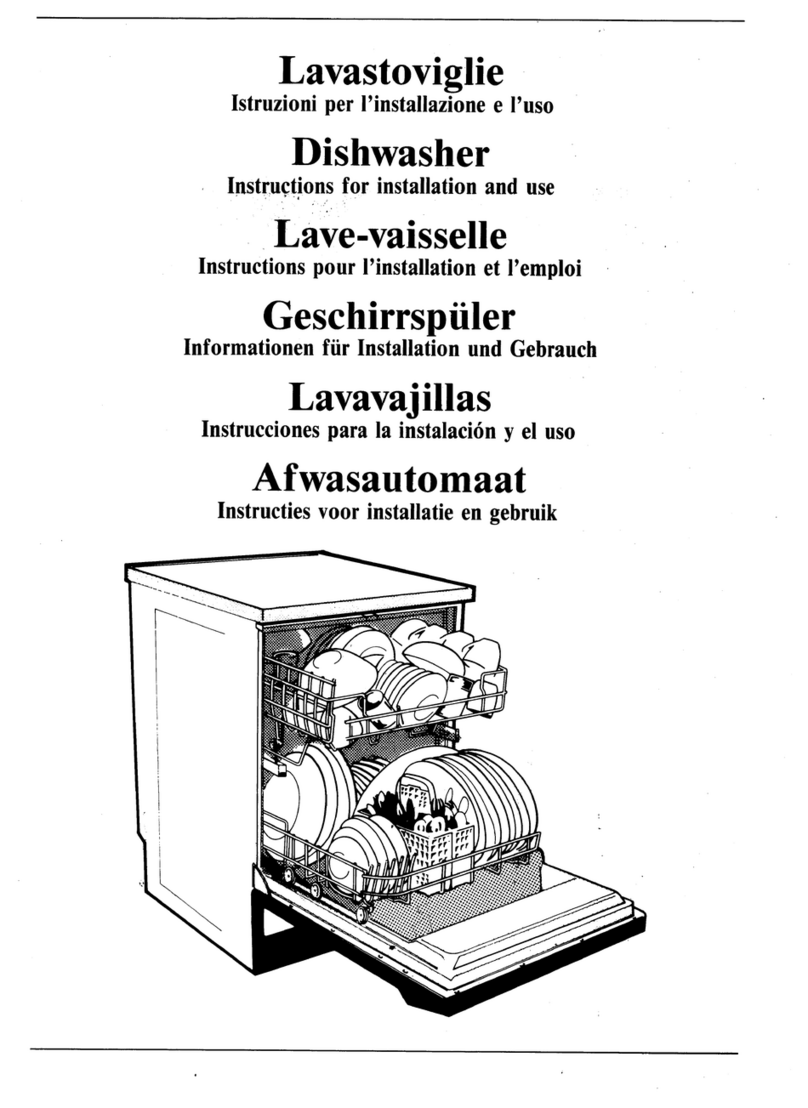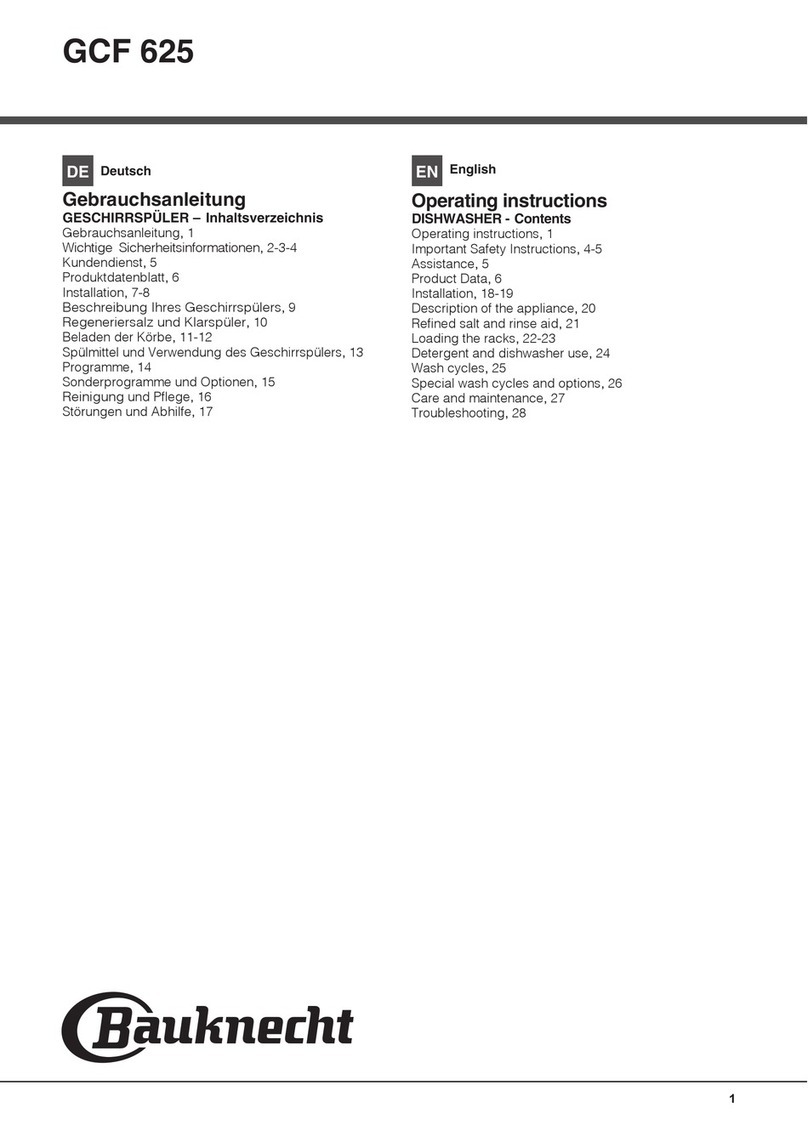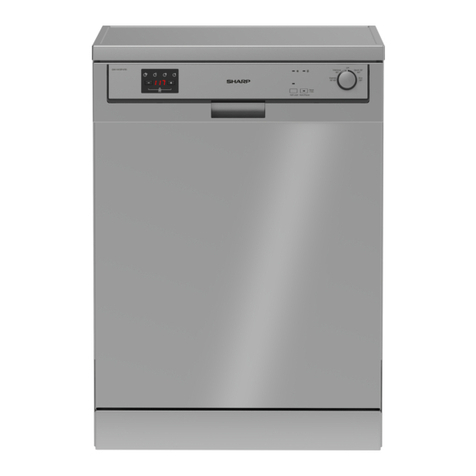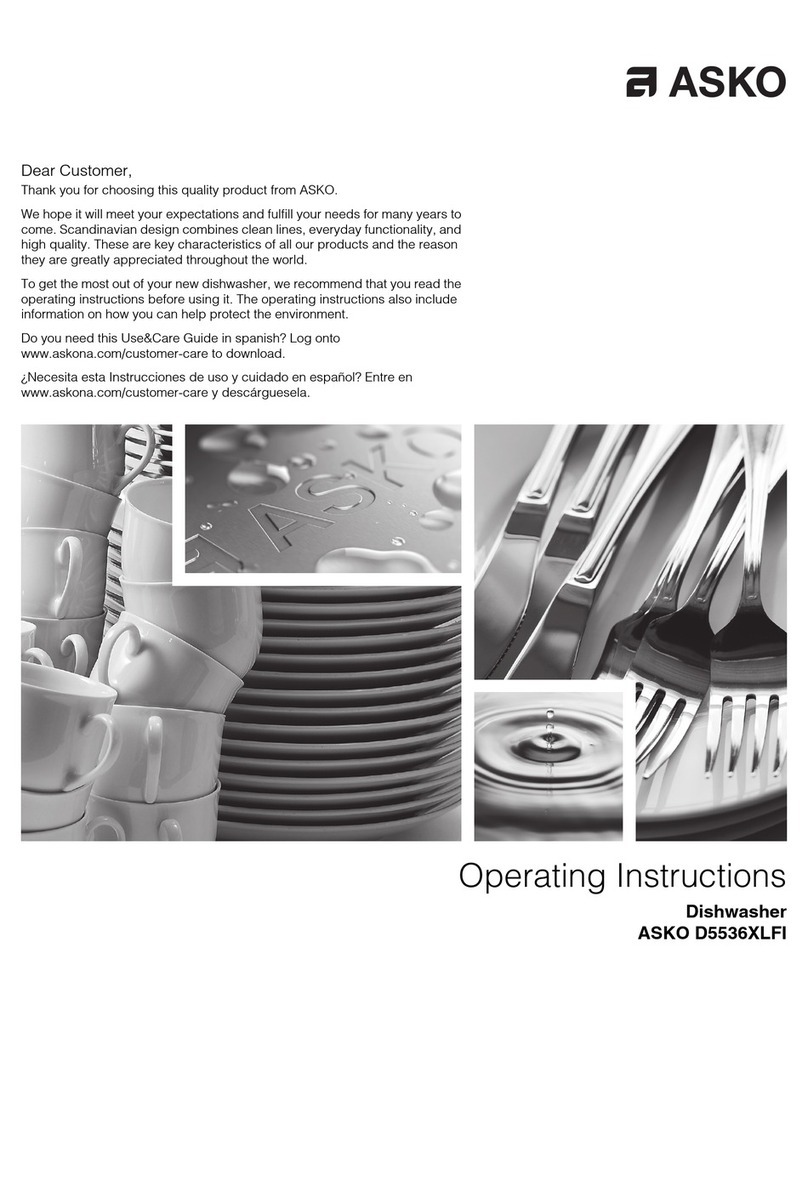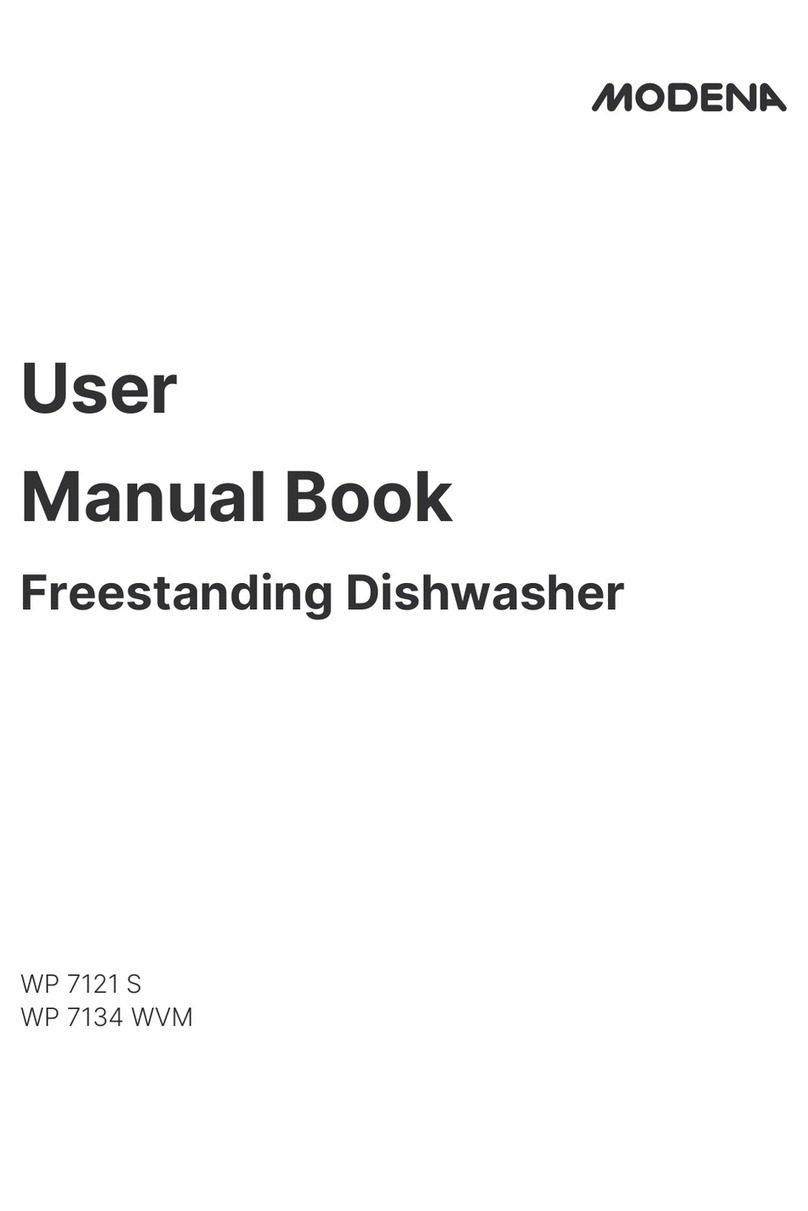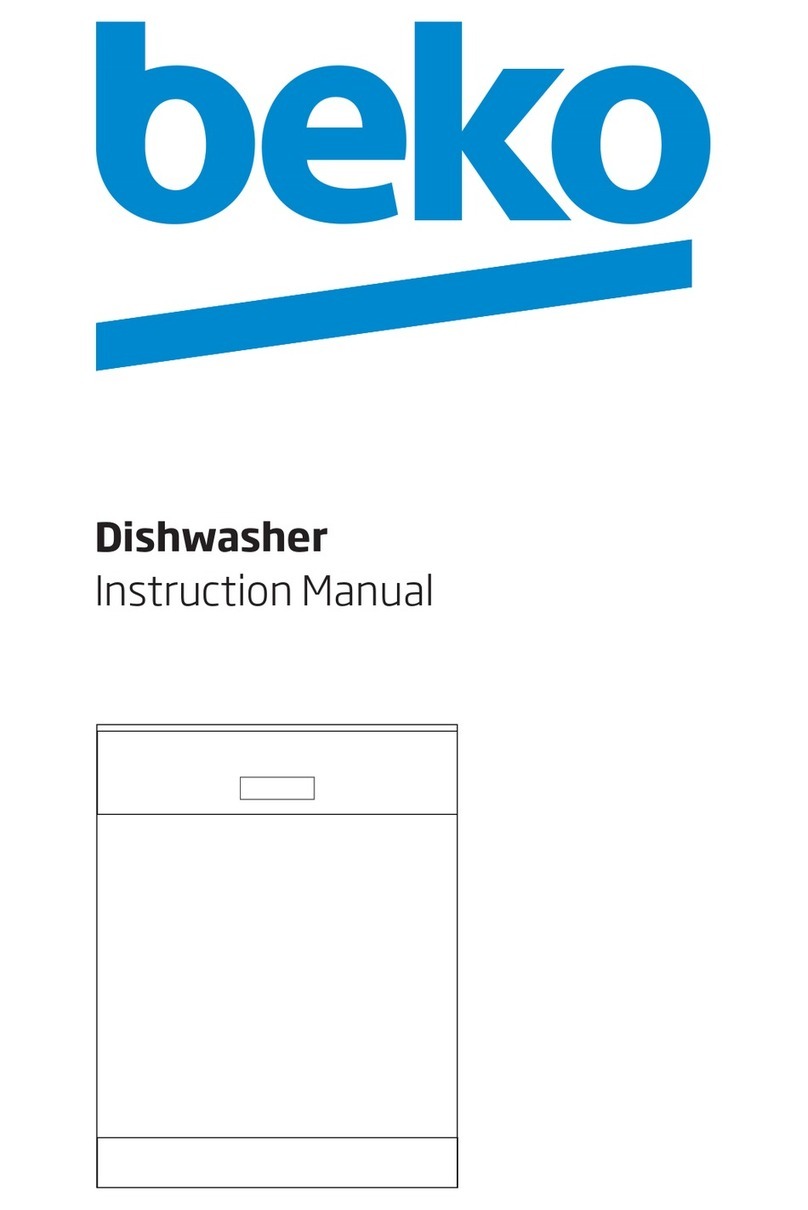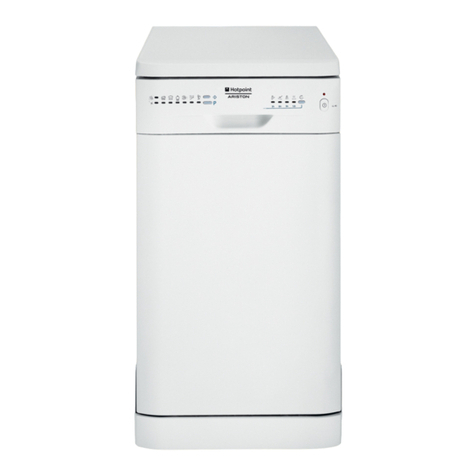GOmi&shwashingstarts
with HOT’-water.
TOgetdishescleanand dry you
needhotwater.‘lbhelp youget
wateroftheproper temperature,
yourGeneral Electric dishwasher
hasawaterheatingfeaturethat
automaticallysensesthetempemtuxe
ofthe waterin the washcycleand
heatsit, ifnecessary,to theproper
temperature.This waterheating
featuremayallowyouto turndown
yourhouseholdwaterheater and
saveenergyif you’rewillingto let
thedishwasherrun alittlelonger
whileitheats waterto theproper
temperature. For good washingand
drying, theentering watermustbe
at least 120”F.Topreventdish
damage, inlet watershouldnot
exceed 150”F.
How totestwatertemperature:
Check yourwater temperaturewith
acandy or meat thermometer. Turn
on the hot water faucetnearest the
dishwasher.Put the thermometer
in aglass and let the waterrun
continuouslyintothe glassuntilthe
temperature stopsrising. If the
watertemperature is below 120°F.,
adjustyour water heater.
Helpful hints: If outside
temperatures are unusuallylow,or
ifyour water travelsalong distance
from heater to dishwasher,youmay
need to set your heater’sthermostat
up. If youhavenot used hot water
for some time, the water in the
pipes will be cold. Turn on the hot
water faucet at the sink and allowit
to run untilthe water is hot. Then
start the dishwasher. If you’ve
recently done laundry or run hot
water for showers, give your watef
heater time to recover before
operating the dishwasher.
HeIp preventspotting
with arinseagent.
Arinseagentmakeswaterflowoff
dishesquickerthanusual, This
lessenswaterspotting.Makes
dryingfaster,too.
Forbest dishwashing
performance,useofarinse
agentis recommended.
Rinseagentscomein eitherliquid
or solidform. Yourdishwasher’s
dispenserusestheliquidform.
Hen-e’show to fillthe rinse agent
dispenser. Unscrewthe cap. Add
theliquidrinse agentuntilitjust
reachesthebottomofthe lipinside
thedispenser opening.Replacethe
cap. The dispenserautomatically
releasesthe rinse agentintothe
finalrinse water.
If you accidentallyspill:Wipe
UPthe rinse agentwith adamp
c~oth.Don’tI;ave the spillin~he
dishwasher.It can keepyour
detergentfrom working.
Myou can’t find any rinse agent,
write:
ECONOMICS LABORA~RY,
INC.
(“JET DRY”)
Osborn Building
St. Paul, Minnesota55102
Yourdishwasher’srinseagent
containerholds4Y2ounces.This
shouldlastabout3months.Fill
asneeded.Donotoverfill:add
only4Y2ounces.
How tochooseandI..lse
theright detergent*
First,use onlydetergents
spedicd~y madeforusein
dishwashers.Othertypeswill
CmllseOW?rsuldsing.
Second, checkthe phosphate
content.Phosphatehelpsprevent
hard-watermaterialsfrom forming
spotsor film onyourdishes. If
yourwater ishard (7grainsor
more), yourdetergenthasto work
harder. Detergentswith ahigher
phosphatelevelwillprobablywork
better.If the phosphatecontentis
low(8.7%or less), you’llhaveto
useextradetergentwith hard water.
Yourwaterdepartmentcan tell
youhowhard yourwateris. So
canyourrural countyagent. Or
yourarea’swater softenercompany.
Justcall and askthem howmany
“grainsofhardness” there are
in yourwater.
How much detergent should you
use? That depends. Is your water
“hard” or “soft”? Withhard water,
youneed extra detergentto get
dishesclean. With softwater, you
need lessdetergent.
Toomuch detergentwith softwater
notonly wastesmoney,it can be
harmful. Rcan cause apermanent
cloudinessof glassware,called
“etching.”An outsidelayer ofglass
isetched away!Butwhy take a
chance when it’seasyto find out
the hardness ofyourwater.
Keep your detergent fresh and
dry. Under the sink isn’tagood
place to store detergent. Toomuch
moisture. Don’tput detergent into
the dispenser untilyou’reready to
wash dishes, either. (It won’tbe
fresh OR dry.)
If your detergent gets old or
Bumpy,tbmv itaway.It won’t
wash well. CMddetergent loses its
power.Lumpydetergentoften
won’tdissolve.


